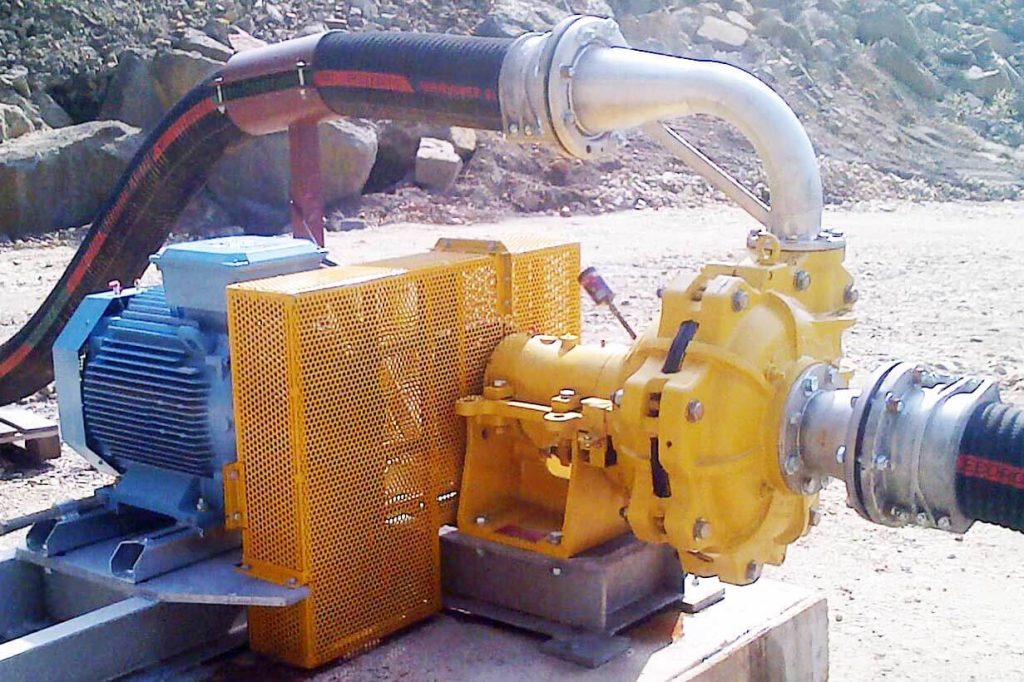Slurry Pump Feeding Is Not good How To Deal With
Slurry pumps are important equipment in industries that handle liquids and solids, such as mining, mineral processing, construction, and wastewater treatment. Their ability to handle abrasive and sticky materials makes them essential for transporting slurry from one place to another. In the mining industry, slurry pumps are vital for transporting ore and waste and maximizing operational efficiency. However, slurry pump feeding can sometimes be problematic because the pump may need a steady flow of material, resulting in reduced efficiency and increased wear.

slurry pump introduction
Slurry pumps are important equipment in the mining and mineral processing industry as they are vital in transporting abrasive and highly concentrated slurries. These pumps are designed to handle conveying heavy, viscous materials that often contain solid particles. What sets slurry pumps apart from other types is their rugged construction and ability to withstand the harsh conditions of handling abrasive materials. Their efficiency and durability make them indispensable for maintaining seamless operations in challenging environments.
The key advantage is their ability to manage high-volume slurry transport over long distances efficiently, making them vital for various hydraulic transportation applications. Additionally, the versatility of slurry pumps allows them to handle a wide range of particle sizes without compromising performance. Walker slurry pump designs continue to evolve to provide greater efficiency, reliability, and ease of maintenance.
- In the mining industry, slurry pumps transport ore and waste materials.
- In the construction industry, they are used to pump concrete mixtures. Pumps must withstand high pressures and abrasive materials while maintaining a stable flow rate. This highlights the versatility of slurry pumps beyond traditional industrial environments, demonstrating their adaptability in different areas.
- In wastewater treatment plants, slurry pumps are used to treat sewage and gray water for recycling. As pump technology advances, there is an increasing focus on energy-efficient design to reduce operating costs while meeting environmental regulations. As a result, slurry pump applications continue to evolve with a focus on sustainability and performance improvements.
Methods to deal with slurry pump feeding
1. Optimize the slurry supply system
Slurry pump feed problems can be a major source of frustration for industrial operations, causing inefficiencies and possible damage to equipment. Optimizing the slurry supply system is an effective way to solve this problem. This includes careful monitoring of the density and consistency of the slurry, as well as ensuring that the pump is sized and designed to handle the specific characteristics of the material being pumped. Additionally, implementing advanced control systems and automation can help maintain stable and reliable feed rates and reduce the risk of pump clogging or damage.
2. Uneven traffic distribution
Another common problem with slurry pump feeds is uneven flow distribution, which can cause the pump to overload and eventually fail. The problem may be caused by improper pump selection, insufficient suction lift, or a clogged discharge line. To fix this problem, you may need to replace the pump or install a booster pump to increase the suction head. Ensure there are no blockages in the discharge line and that the flow distribution is evenly distributed across the pump.
3. The slurry concentration is inconsistent
The slurry concentration may occasionally fluctuate, causing slurry pump delivery problems. Various factors, such as changes in the slurry source, flow rate, or particle size distribution, can cause this problem. The slurry concentration must be monitored regularly, and the pump must be adjusted to address these issues. You can also install a slurry flow controller to keep the slurry consistency consistent.
4. Regular cleaning and maintenance
Resolve any potential blockages or obstructions in the slurry supply line. Regular maintenance and cleaning of the feed tube can prevent buildup and ensure smooth flow to the pump. Additionally, proper screening or filtration can help remove solid particles or debris from the slurry before it reaches the pump, thereby reducing wear on equipment components. By paying close attention to these critical aspects of slurry pump delivery, operators can mitigate common problems and improve overall performance, ultimately helping to increase operational efficiency and cost-effectiveness.
Slurry pump feeding problems can be solved by solving the root cause of the problem. By paying close attention to these critical aspects of slurry pump feeding, operators can mitigate common issues and improve overall performance, ultimately helping to increase operational efficiency and cost-effectiveness. Walker provides various types of slurry pumps with strong durability and high efficiency to transport materials. Contact us to get a quote!
